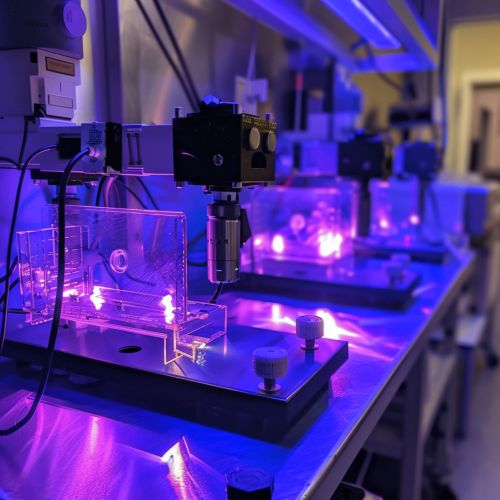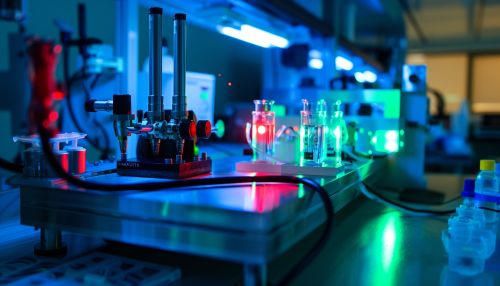John Polanyi: Difference between revisions
(Created page with "== Early Life and Education == John Charles Polanyi was born on January 23, 1929, in Berlin, Germany. He is the son of Michael Polanyi, a renowned chemist and philosopher, and Magda Elizabeth Polanyi, a distinguished physician. The Polanyi family moved to England in 1933 to escape the rise of the Nazi regime. John Polanyi attended the University of Manchester, where he earned his Bachelor of Science degree in 1949. He continued his studies at the same institution, obtain...") |
No edit summary |
||
| Line 11: | Line 11: | ||
Infrared chemiluminescence is a powerful tool for studying the dynamics of chemical reactions. By analyzing the infrared light emitted by reaction products, Polanyi was able to determine the distribution of energy among translational, rotational, and vibrational modes. This information is crucial for understanding the pathways and intermediates involved in chemical reactions. Polanyi's work in this area has led to the development of more accurate models for predicting reaction outcomes and has had a profound impact on the field of chemical kinetics. | Infrared chemiluminescence is a powerful tool for studying the dynamics of chemical reactions. By analyzing the infrared light emitted by reaction products, Polanyi was able to determine the distribution of energy among translational, rotational, and vibrational modes. This information is crucial for understanding the pathways and intermediates involved in chemical reactions. Polanyi's work in this area has led to the development of more accurate models for predicting reaction outcomes and has had a profound impact on the field of chemical kinetics. | ||
[[Image:Detail-96199.jpg|thumb|center|Experimental setup for infrared chemiluminescence studies in a laboratory.|class=only_on_mobile]] | |||
[[Image:Detail-96200.jpg|thumb|center|Experimental setup for infrared chemiluminescence studies in a laboratory.|class=only_on_desktop]] | |||
=== Reaction Dynamics === | === Reaction Dynamics === | ||
Latest revision as of 12:14, 4 July 2024
Early Life and Education
John Charles Polanyi was born on January 23, 1929, in Berlin, Germany. He is the son of Michael Polanyi, a renowned chemist and philosopher, and Magda Elizabeth Polanyi, a distinguished physician. The Polanyi family moved to England in 1933 to escape the rise of the Nazi regime. John Polanyi attended the University of Manchester, where he earned his Bachelor of Science degree in 1949. He continued his studies at the same institution, obtaining his Ph.D. in 1952 under the supervision of Michael Polanyi and Henry Eyring, focusing on chemical kinetics.
Academic Career
After completing his doctorate, Polanyi worked as a research associate at the National Research Council of Canada from 1952 to 1954. He then spent a year at Princeton University as a research fellow. In 1956, Polanyi joined the University of Toronto, where he has remained throughout his career. He became a full professor in 1962 and was later appointed as a University Professor, the highest academic rank at the institution.
Research Contributions
Polanyi's research has primarily focused on the dynamics of chemical reactions. He is best known for his work on the infrared chemiluminescence technique, which he developed to study the energy distribution among the products of chemical reactions. This technique involves the detection of infrared light emitted by molecules as they transition from excited states to lower energy states. Polanyi's pioneering work in this field has provided significant insights into the mechanisms of chemical reactions at the molecular level.
Infrared Chemiluminescence
Infrared chemiluminescence is a powerful tool for studying the dynamics of chemical reactions. By analyzing the infrared light emitted by reaction products, Polanyi was able to determine the distribution of energy among translational, rotational, and vibrational modes. This information is crucial for understanding the pathways and intermediates involved in chemical reactions. Polanyi's work in this area has led to the development of more accurate models for predicting reaction outcomes and has had a profound impact on the field of chemical kinetics.


Reaction Dynamics
Polanyi's research on reaction dynamics has focused on understanding how energy is transferred during chemical reactions. He has studied a wide range of reactions, including those involving simple diatomic molecules as well as more complex polyatomic species. His work has revealed the importance of factors such as collision energy, molecular orientation, and the presence of intermediate states in determining reaction outcomes. Polanyi's contributions to this field have helped to establish a more detailed and nuanced understanding of chemical reactivity.
Nobel Prize
In 1986, John Polanyi was awarded the Nobel Prize in Chemistry, along with Dudley R. Herschbach and Yuan T. Lee, for their contributions to the understanding of the dynamics of chemical elementary processes. The Nobel Committee recognized Polanyi's development of the infrared chemiluminescence technique and his subsequent studies of reaction dynamics as groundbreaking achievements that have advanced the field of chemical kinetics.
Later Work and Legacy
Following his Nobel Prize win, Polanyi continued to make significant contributions to the field of chemistry. He has published numerous papers on topics ranging from reaction dynamics to the development of new spectroscopic techniques. Polanyi has also been an advocate for the responsible use of scientific knowledge and has spoken out on issues such as nuclear disarmament and environmental protection.
Awards and Honors
In addition to the Nobel Prize, Polanyi has received numerous other awards and honors throughout his career. These include the Wolf Prize in Chemistry, the Royal Medal of the Royal Society, and the Order of Canada. He is a Fellow of the Royal Society of London and a member of several other prestigious scientific organizations.
Personal Life
John Polanyi is married to Anne Polanyi, and they have two children. He is known for his modesty and dedication to his work. Despite his numerous accolades, Polanyi remains committed to advancing scientific knowledge and mentoring the next generation of chemists.
See Also
References
- Polanyi, J. C. (1986). "Some Concepts in Reaction Dynamics". Nobel Lecture.
- Polanyi, J. C. (1972). "Infrared Chemiluminescence". Accounts of Chemical Research, 5(5), 161-168.
- University of Toronto. "John Polanyi". Faculty Profile.
